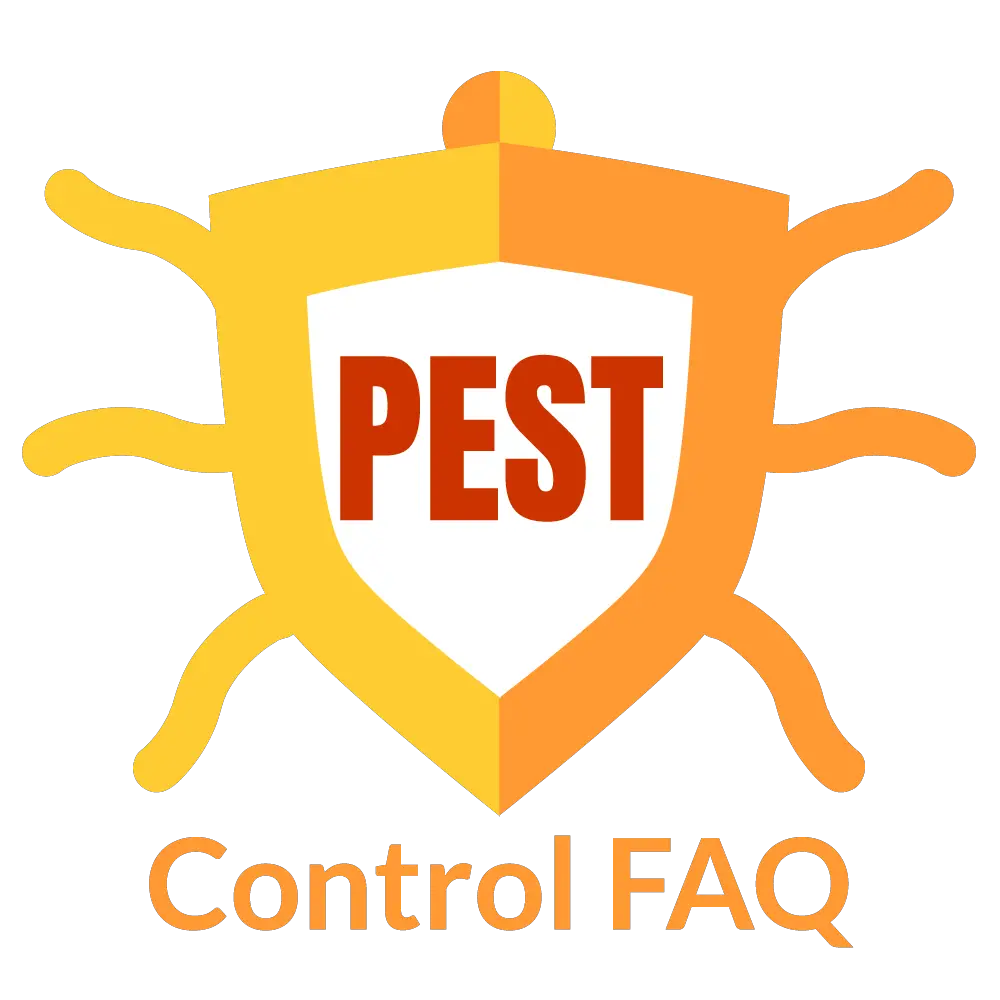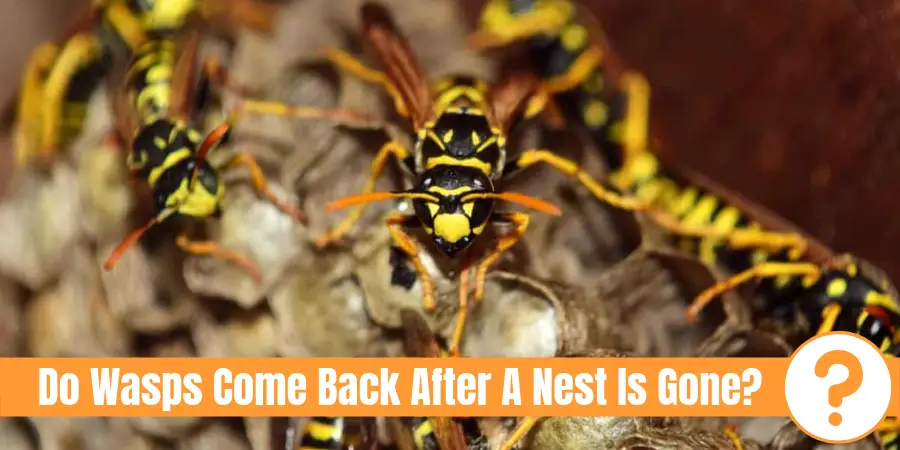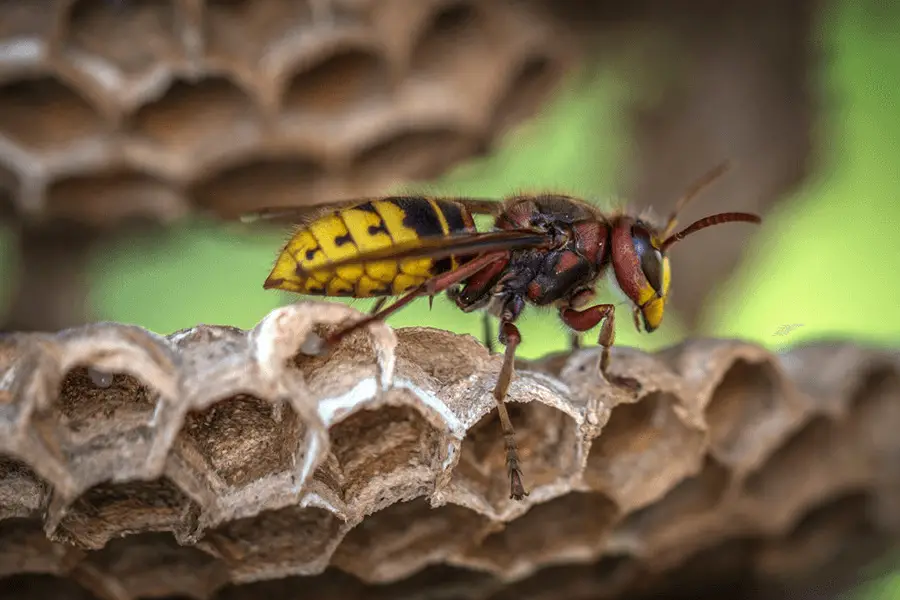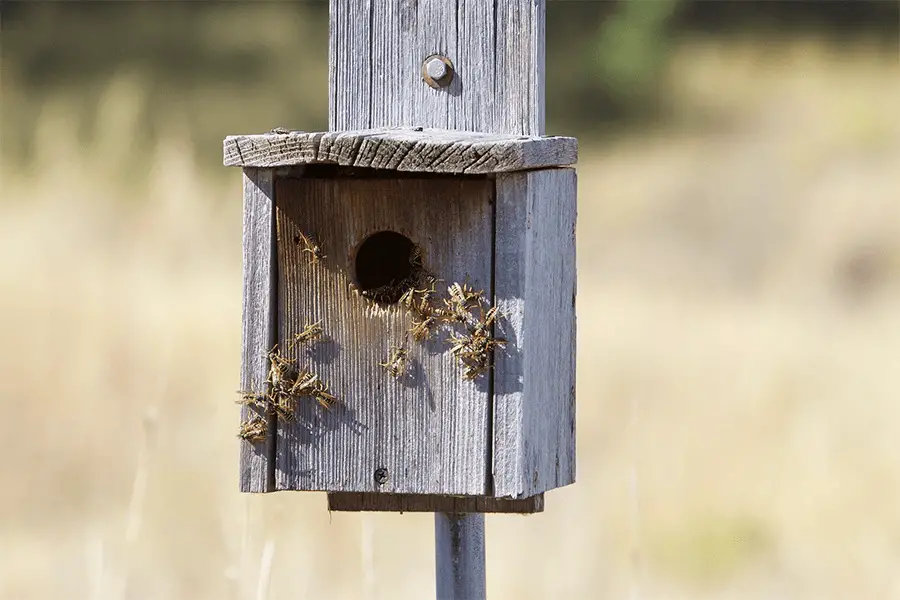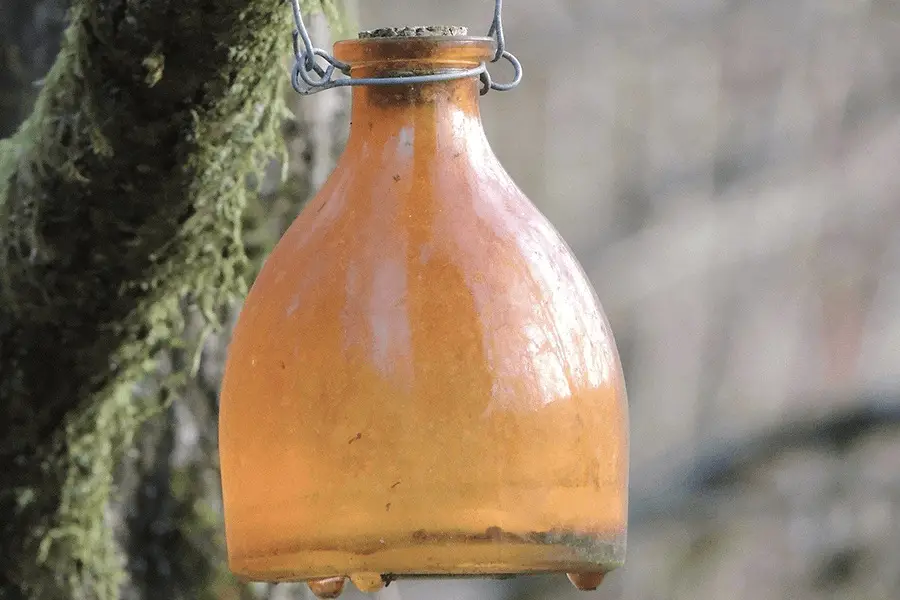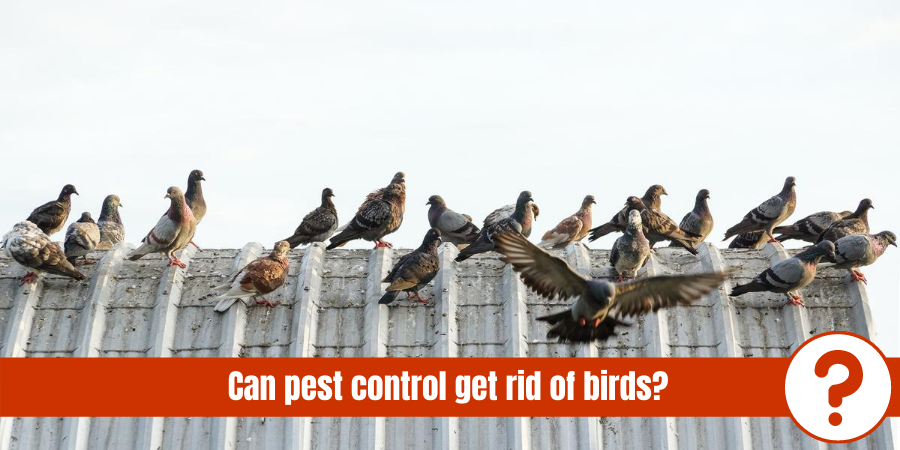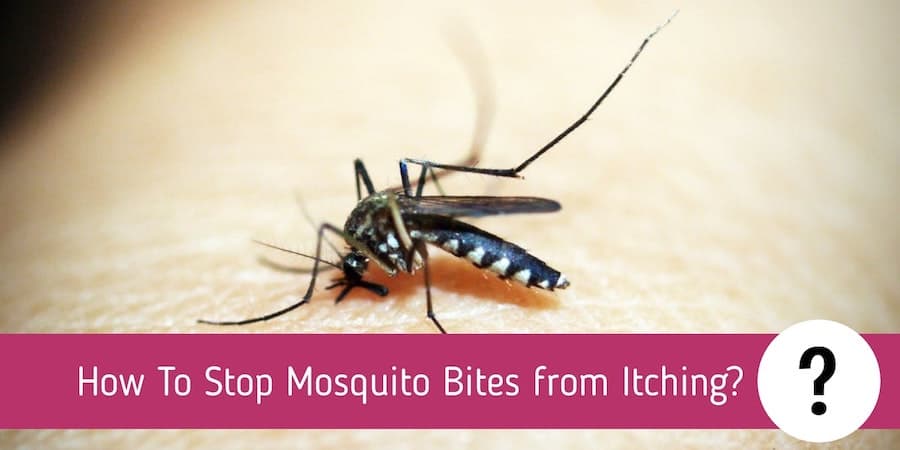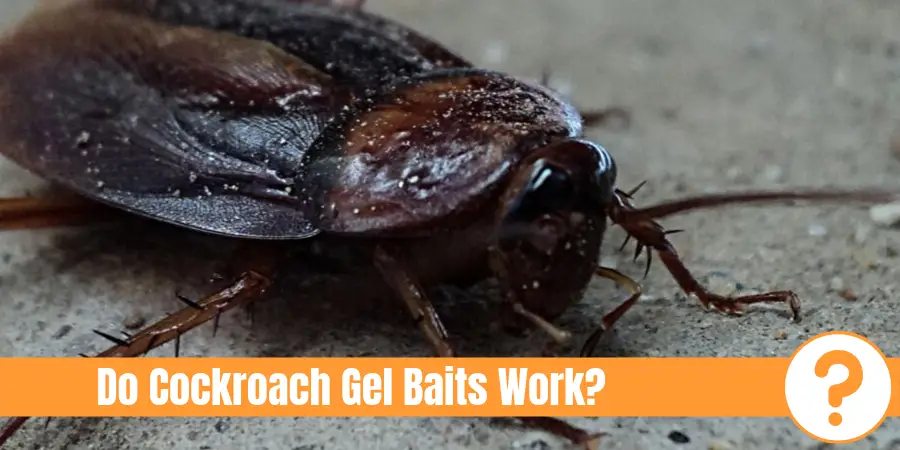Getting rid of wasps can be dangerous and stressful. Managing to do it without getting stung can be easier said than done, and what is the point if they are just going to come back again?
Do wasps come back after a nest is gone? While wasps do come back, they usually only remain around their old destroyed nest site for a few hours before realizing their nest is gone. They will typically not rebuild their nest in the same location.
But where do the wasps go and what can you do to keep them from returning? Continue reading to find out everything you need to know about how to be rid of wasps for good.
Table of Contents
But where do the wasps go?
While wasps will almost always return to the site of their destroyed nest, their behavior after this will vary depending on whether or not their queen is still alive. If the queen is dead, then the wasps have no chance at rebuilding since no wasp can birth the next generation and their efforts would be futile.
If this happens, the nest will effectively die. Slowly the wasps will start to leave the site of the destroyed nest (some may try to hang around for a few hours or days) and leave in search of a hive where they may get accepted.
Because the wasps will be confused about what to do without their queen or nest, they may linger for a while around the site of the destroyed nest to communicate with the other wasps.
If the wasps are unable to find a new colony, then they will die due to the weather and lack of resources. Wasps cannot survive very long without a nest, and it is hard for them to be accepted into a new nest.
Will the wasps rebuild?
If the queen survives, the wasps will always rebuild the nest. If the nest was destroyed by accident through natural causes, the wasps might rebuild in the same spot. But if it was clearly destroyed by an enemy (you), then they are much less likely to rebuild in the same location.
So, even if they rebuild it will not likely happen in that same location. However, be on the lookout for new nests in other locations on your property as they will want to rebuild their nest quickly.
If by chance, the wasps rebuild their nest in the same location (probably because they don’t realize that it was not destroyed by natural causes), then destroying it a second time should send them packing.
Rebuilding is not possible without the queen. The wasps will likely die, and no matter what, it will mean the end of their colony. Their only hope is that they find another colony willing to take them in, but since wasps are highly territorial and aggressive, this is not likely.
How nests are destroyed can determine wasp behavior
Some nests can be destroyed and leave extremely little evidence behind that it was ever there. When this happens, wasps will not stick around for longer than a few hours because there is nothing there for them. If you can completely wipe out any trace of their nest, they will be less likely to rebuild.
If dust-based pesticides are used in extermination, then some wasps are less likely to make an immediate exit. They tend to fly in and out of the nest for a while until they realize that they are being harmed. This will result in a larger clustering of wasps hanging around this area because they are unsure of what happened to the hive and they think the dust is playing tricks on them.
Other methods such as poisoning can be a strong deterrent to wasps that try to come back, and they will leave upon seeing the hive contaminated.
How to prevent the wasp colony from rebuilding on your property
There are many deterrents that you can use to make sure the wasps don’t rebuild on your property and make them scatter away into the environment. Wasps don’t last very long without a hive, so they will try to rebuild one as fast as possible.
1. Contaminate the old nest with poison
The best way to ensure that wasps understand that they are not welcome is to use poison to destroy their nest. Make sure it is completely unlivable, and you kill off as many wasps in the process. This is so the wasps won’t have any choice but to leave and hope to get accepted into a new nest far away.
The wasps won’t rebuild without a queen to continue making offspring, and the wasps know the area is unsafe due to the poison, and they will try to get as far away from it as possible.
2. Use a fake nest
Some people use artificial or old wasp nests to make the wasps think there is already a hive in the area and thus the territory is claimed already. These nests are not just for decoration. They can make great wasp repellents.
After destroying the nest, hang a few fake nests around areas you think they might rebuild to ensure that they stay away.
3. Sabotage their favorite nest locations
Wasps like safe, dry, and structurally sound areas. By restricting their access to places like this or just making these areas wet, or seem dangerous and unstable, you should be able to prevent rebuilding in these areas.
How to get rid of a wasp’s nest
Nests can be a challenge to get rid of because if one is destroyed at the wrong time you could be attacked by hundreds of wasps. Then they would simply rebuild any damage you did to it. A more effective approach is to use poison to make sure all the wasps clear out and never come back.
Using poison to get rid of wasps
The key to using an insecticide on these is making sure that you use a spray that has pyrethroid as an active ingredient. Pyrethroid is a chemical insecticide that is based on the natural ingredient in chrysanthemum flowers. It is often used in agriculture because of its effectiveness.
In order to get the best effects, you should follow some basic rules.
During the daytime, there will be the least number of wasps in or around the nest. The ones around will be doing hive maintenance and upkeep. The other wasps are gathering more building material and food during this time.
Poison will not be most effective at this time if you want to kill the majority of the wasps because you may only kill about 10% of the total wasp population and the rest will just come back. The conditions must be right for the poison to work and kill all the wasps in the colony. When you use poison you should:
- Look up your local weather and determine a day that will have very low temperatures.
- Gather your equipment (poison, applicator, safety equipment).
- Plan to go out before sunrise when it is fully dark and the weather is coldest, most likely 3-4am.
- It is recommended to use two people if it is a large nest. Use a flashlight to locate the nest and then saturate the whole nest in poison. The nest must be completely soaked, targeting any nearby wasps that escaped onto the walls and doors as well.
- Leave the nest there so that any wasp that returns will see the poisoned nest and know that it is an unsafe location for a nest. The returning wasps might hang around for a bit but will eventually leave.
Using a wasp trap
A homemade wasp trap will be easy to set up, maintain, and will most importantly be effective in trapping and killing wasps. Traps are particularly useful for catching stragglers so that you don’t have to hunt them down yourself since they could be anywhere.
- Get a 2-liter soda bottle and remove the labels. Any large carton or bottle could work, just make sure the opening is big enough for a wasp.
- Draw a line with a marker around the neck of the bottle.
- Carefully cut off the top along the line you just drew. A box cutter will be the easiest but scissors should work as well.
- Grease the inside of the bottle with olive oil
- Flip the cut-off neck upside down and reinsert it into the bottle (make sure the cap is removed so the wasps can get in).
- Tape these two parts together so that they are attached.
- Cut two holes on opposite sides at the top of the bottle trap.
- Tie string or cord to these holes so that it can be hung somewhere.
- Fill your trap with your bait of choi
- Hang the trap up in a highly suspected wasp traffic area.
- Check the wasp trap count regularly.
- Clean out the bottle and replace the bait by undoing the tape on the bottle every 3 days.
- Get rid of dead wasps (burying or flushing). Dead wasps release a chemical that attracts other wasps and will attack in groups if they sense another wasp is being harmed.
What bait should you use with the wasp trap?
You can use scraps of meat or grease as bait for the inside of the bottle for spring to early summer. Then from summer to early fall use 1 part sugar, 1 part liquid dish soap, and 1 part water. You can also use juice, soda, fruit, or anything else sweet and sugary.
As long as all precautions are taken, no, wasps will not return once a nest is destroyed. The traps and techniques you find here have all been proven to be successful and should be just what you need to take care of any pesky hives.
